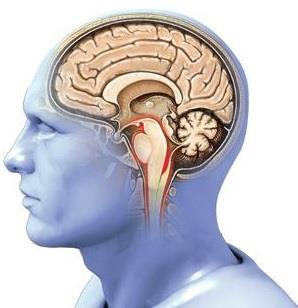December 3, 2013
LONDON: Women have sharper memory while men coordinate things better.

The brain is a roadmap of neural pathways linking many networks that help us process information and react accordingly.
December 3, 2013
LONDON: Women have sharper memory while men coordinate things better.

The brain is a roadmap of neural pathways linking many networks that help us process information and react accordingly.
An Indian Institute of Technology-Delhi alumni has created the first ever map of neural circuitry inside a human brain which has confirms that women's brains are designed for social skills and memory while men's are for perception and co-ordination.
However, there is one field in which women beat men hollow – multitasking, finds the study that looks at brain connectivity.
A new brain connectivity study from Penn Medicine published on Monday has found striking differences in the neural wiring of men and women that's lending credence to some commonly-held beliefs about their behavior.
In one of the largest studies looking at the "connectomes" of the sexes, Ragini Verma, an associate professor in the department of radiology at the Perelman School of Medicine at the University of Pennsylvania found greater neural connectivity from front to back and within one hemisphere in males, suggesting their brains are structured to facilitate connectivity between perception and coordinated action.
In contrast, in females, the wiring goes between the left and right hemispheres, suggesting that they facilitate communication between the analytical and intuition.
Ragini who completed her masters in mathematics and computer applications followed by a PhD in computer vision and mathematics from IIT Delhi says "These maps show us a stark difference – and complementarity – in the architecture of the human brain that helps provide a potential neural basis as to why men excel at certain tasks, and women at others".
According to Verma, on average, men are more likely better at learning and performing a single task at hand, like cycling or navigating directions, whereas women have superior memory and social cognition skills, making them more equipped for multitasking and creating solutions that work for a group.
In the study, the researchers found that females displayed greater connectivity in the supratentorial region, which contains the cerebrum, the largest part of the brain, between the left and right hemispheres. Males, on the other hand, displayed greater connectivity within each hemisphere.
By contrast, the opposite prevailed in the cerebellum, the part of the brain that plays a major role in motor control, where males displayed greater inter-hemispheric connectivity and females displayed greater intra-hemispheric connectivity.
These connections likely give men an efficient system for coordinated action, where the cerebellum, which involves perception, and the front of the brain, which involves action, are bridged together, according to the authors.
The female connections likely facilitate integration of the analytic and sequential processing modes of the left hemisphere with the spatial, intuitive information processing modes of the right side.
The authors observed only a few gender differences in the connectivity in children younger than 13 years, but the differences were more pronounced in adolescents aged 14 to 17 years and young adults older than 17.
Past studies have shown sex differences in the brain, but the neural wiring connecting regions across the whole brain that have been tied to such cognitive skills has never been fully shown in a large population.
In the study, Verma and colleagues investigated the gender-specific differences in brain connectivity during the course of development in 949 individuals (521 females and 428 males) aged 8 to 22 years using diffusion tensor imaging (DTI).
DTI is water-based imaging technique that can trace and highlight the fibre pathways connecting the different regions of the brain, laying the foundation for a structural connectome or network of the whole brain.
The brain is a roadmap of neural pathways linking many networks that help us process information and react accordingly, with behavior controlled by several of these sub-networks working in conjunction.
The findings were also consistent with a Penn behavior study, of which this imaging study was a subset of that, demonstrated pronounced sexual differences.
Females outperformed males on attention, word and face memory, and social cognition tests. Males performed better on spatial processing and sensorimotor speed. "It's quite striking how complementary the brains of women and men really are. Detailed connectome maps of the brain will not only help us better understand the differences between how men and women think, but it will also give us more insight into the roots of neurological disorders, which are often sex related".
Next steps are to quantify how an individual's neural connections are different from the population; identify which neural connections are gender specific and common in both and to see if findings from functional magnetic resonance imaging (fMRI) studies fall in line with the connectome data.
Courtesy: TNN
















































































































